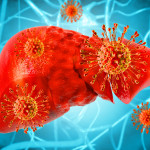Interrupting HIV therapy was associated with nearly three times as many non-AIDS-related deaths in people with HIV and either hepatitis B virus (HBV) or hepatitis C virus (HCV) than in people infected with only HIV, according to a study published in the December 1 issue of Clinical Infectious Diseases. The increased death rate did not appear, however, to be related to liver disease.
There have been conflicting data on the impact of antiretroviral (ARV) treatment in people coinfected with HIV and HBV or HCV. Earlier studies found that the toxicity of some ARV drugs may be enhanced in coinfected individuals, particularly those coinfected with HCV. Yet there have also been suggestions that ARV therapy may slow the speed of hepatitis disease progression.
So is it better for coinfected patients to be on or off HIV treatment? To explore this question, Ellen Tedaldi, MD, from the Temple University School of Medicine in Philadelphia, and her colleagues reanalyzed data from the Strategic Management of Antiretroviral Therapy (SMART) study. SMART compared people who remained on continuous ARV therapy with people who either delayed or stopped treatment until their CD4 counts fell below 250 cells.
Dr. Tedaldi’s group compared 930 patients in the study who were hep-coinfected with the remaining 4,532 patients who were infected with only HIV. As with the larger group, the coinfected group who remained on continuous therapy did better than the group on intermittent therapy. Among those who delayed or stopped treatment, however, the rate of deaths was nearly three times higher in those living with HIV and either HBV or HCV—although coinfected patients made up only 17 percent of the SMART participants, almost half of non-AIDS-related deaths occurred in this population.
Upon further investigation, Tedaldi’s team found that the most common non-AIDS-related deaths in the coinfected group were related to suicide and substance use. Moreover, when the team looked at the severity of hepatitis disease in the coinfected group among those who died, they found it to be on average quite low, indicating that factors other than hepatitis and liver disease led to the increased deaths.
The authors acknowledge that the coinfected group differed in some important ways from the group infected with only HIV. They were more likely to be African American, older and more likely to have a history of alcohol abuse. What’s more, the authors did not have access to data on injection drug use, which is generally more likely in people coinfected with hepatitis. Despite these limitations, the authors stress that the data compellingly suggest that treatment interruptions may be particularly hazardous for patients coinfected with hepatitis, given the increased risk for non-AIDS-related deaths.
Advertisement
Advertisement
Advertisement





1 Comment
1 Comment